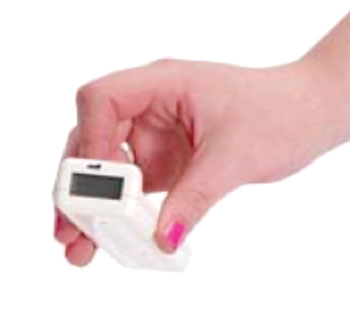Nuclear Medicine
Neuroimaging Devised to Help Predict Future Behavior
A review article has focused on a number of recent studies showing that brain imaging can help predict an individual’s future learning, criminality, health-related behaviors, and response to drug or behavioral treatments. The technology may offer new strategies for customizing educational and clinical practices. More...02 Feb 2015
Agreement to Boost Innovation in Nuclear Medicine Radioactive Tracers
An agreement has been signed that will innovate and increase the availability of tracers for Positron Emission Tomography scanning. The agreement includes the building of a new cyclotron PET tracer production center. More...13 Jan 2015
GE Healthcare and Karolinska University Partner to Optimize Cancer Treatment with PET Tracer Production Facility
GE Healthcare has signed one of the largest cyclotron and radiochemistry system agreements worldwide with Stockholm Sweden’s County Council and Karolinska University Hospital. More...11 Jan 2015

Real-Time Radiation Monitor Designed to Decrease Radiation Exposure for Medical Workers
A real-time radiation monitor has been developed that signals by beeping in response to radiation exposure during cardiac-catheterization procedures. The device significantly reduces the amount of exposure that medical workers receive. More...05 Jan 2015
SPECT Imaging Scan to Find Source of Epileptic Seizures
Some patients cannot tolerate the side effects of medications that are used to treat epileptic seizures and become candidates for surgery in which the epileptogenic zone in the brain is removed. Surgery is only an option if the affected part of the brain is not responsible for critical functions. Sometimes it is not possible to localize an epileptogenic zone with a Magnetic Resonance Imaging scan, or an electroencephalogram. More...04 Jan 2015
In Other News
PET Scans Help Identify Effective Tuberculosis Drugs
In Veterans with PTSD, PET/CT Imaging Reveals Pituitary Abnormalities
Arc Therapy Radiosurgery Faster Than Gamma Knife Treatments
World’s First Clinical MRI-Guided Radiation Therapy System Awarded CE Marking
Combining PET and MRI to Visualize Development of Alzheimer’s Disease
Hypofractionated Prostate Radiotherapy Electromagnetic Positioning Tool Tracks Tumors in Real Time During Treatment
PET Scans Reveal How Psychodynamic Therapy for Depressed Patients May Alter Brain Function
Electron Intraoperative Radiotherapy Can Reduce Six-Week Radiation Cycles to One Day
Stereotactic Body Radiotherapy Provides Sustained Local Control for Inoperable, Early Stage Lung Cancer Patients
New Radiosurgery Technology Used to Treat Tumors Encroaching on Patient’s Spinal Cord
Proton Therapy for Early Stage Breast Cancer Less Expensive Than Various Alternative Radiotherapy Techniques
Prone Radiotherapy Board Used for Breast Cancer Patients Cuts the Amount of Radiation to Lung, Heart Tissue by 90%

Technique Enables More Effective PET Scanning to Detect Cancer, Heart Conditions
New SPECT System Scans Virtually Every Patient and Is Designed to Fit into Most Nuclear Medicine Exam Rooms
Integrated Nuclear Medicine System Increases Clinical Throughput and Improves Interdepartmental Communication.
Five Proton Therapy Treatment Rooms Plus System Upgrade Deployed at Scripps Proton Therapy Center
PET/CT Imaging Could Transform Diagnosis and Treatment for Children with Neuroblastoma
FDG-PET/CT Imaging Helpful for Breast Cancer Patients Younger Than Forty
PET-CT Used for Lung Cancer Diagnosis May Be Less Effective in Areas Where Infectious Lung Disease Is More Common
PET-CT Imaging Forecasts Survival of Lymphoma Better Than Standard Imaging Strategies
First All Pencil-Beam Proton Center in the United States Designed to Treat Wide Range of Tumors
MRI and PET Used with Solid Tumor Response Evaluation Criteria to Track Treatment in Bone Metastases
Global Partnership Provides Treatment Planning Support for Modulated Arc Radiotherapy
The Nuclear Medicine channel of MedImaging brings the latest in research and clinical radiotherapy, proton therapy, PET-CT, SPECT, SQUID, radiopharmacology, scintillography, trends and safety concerns.











